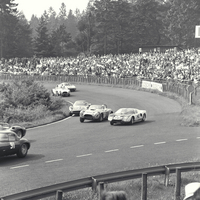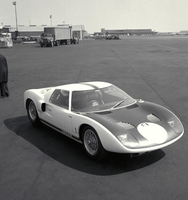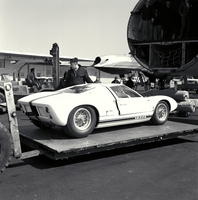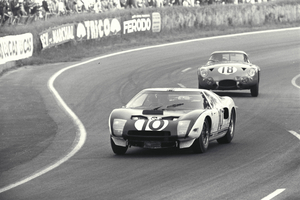|
Send this page to a friend! Fill in the form bellow | ||
news
Le Mans: Ford vs. Ferrari - Part 1
Henry Ford had been determined to have a Ford at Le Mans since the early 1960s, and in the spring of 1963 he received word that Italy’s most famous car company could be on the market. Immediately Henry Ford opened up a line of communication with Enzo Ferrari.
Ford’s determination to compete at Le Mans, in fact, to compete in motorsport at all was at odds with the American automotive industry at the time. Following Pierre Levegh’s accident in his Mercedes 300 SLR at the 1955 Le Mans 24 hours which killed 83 spectators the American Automobile Manufacturers Association banned any manufacturer involvement in motorsport. Henry Ford was reluctant to sign up to this covenant in 1957, so it came as no surprise that his company was the first to announce its withdrawal five years later. Henry Ford II sent a letter to the AMA saying that the rule ‘no longer has either purpose or effect’.
The negotiations with Ferrari fell through when Enzo, enraged by Ford’s insistence on Ferrari not competing at the Indianapolis 500, withdrew from negotiations at the last minute. Henry Ford, equally outraged, decided to beat Ferrari at its own game and embarked upon an intensive motorsport project.
Ford opened negotiations with Lotus, Lola and Cooper. Cooper was dismissed due to its decline in fortunes. Meanwhile Colin Chapman, the mercurial Englishman, insisted upon a set of conditions that Ford would never agree to, including naming the new car a Lotus-Ford.
Lola had used a Ford V8 in its Mk 6 and the firm’s owner Mike Broadley agreed to a short term collaboration with Ford. Mike Lunn, an engineer from Dearborn was sent to England and Ford Advanced Vehicles Ltd was founded just outside Slough.
A 4.2-litre Ford Fairlane engine was upgraded to the lighter 350bhp ‘Indianapolis’ version from the Lotus 29 and bolted to a chassis which included advanced double wishbones at the front and transverse links and radius arms at the rear. Ford also used a wind tunnel to shape the glassfibre body for improved aerodynamics, albeit only up to 125 mph, the highest the wind tunnel could replicate in the early 1960’s.
Journalists were invited to Slough on April 1 1964 and flown to New York to see the GT40 make its debut at the New York Motor Show. Two weeks later Jean-Louis Schlesser had a massive accident at Le Mans in the prototype at 150 mph when the rear of the car went light. More work would have to be done on the high speed aerodynamics before the mighty Fords could take on Enzo Ferrari and his famous red cars at Le Mans.
Ford entered the GT40 into its first race at the Nurburgring 1000km in May 1964 under the stewardship of John Wyer, the ex-Aston Martin team manager. It ran well initially, holding second place until the suspension gave way early in the event. Three weeks later it was the 1964 Le Mans 24 hour race and Ford entered three GT40’s for its first all-out assault on the event. Unfortunately for Wyer this event ended in failure, with all three cars retiring and Carroll Shelby being put in charge of the racing programme for the 1965 season and beyond.
Read on about the Ford vs. Ferrari rivalry in part 2:
Encyclopedia | Engine V 8 Displacement 256 cu in Top Speed 140 mph Transmission -- Maximum power 355 hp @ 7200 rpm Type Fixed-head coupé Fuel Petrol Fuel consumption (combined) -- | price -- annual ownership cost $ 1.042 |
4 comments
Contribute
more about Ford



latest news



















